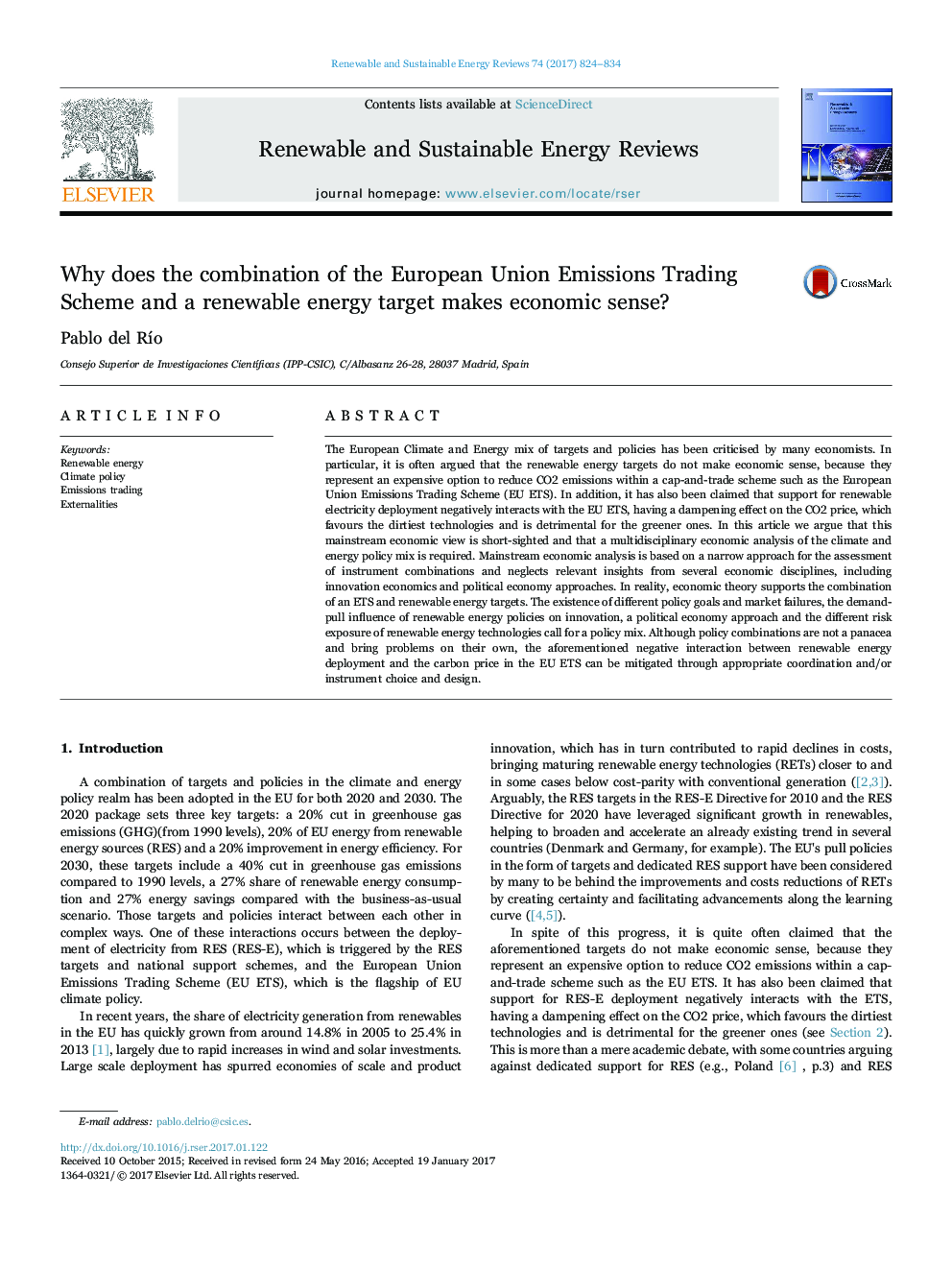| کد مقاله | کد نشریه | سال انتشار | مقاله انگلیسی | نسخه تمام متن |
|---|---|---|---|---|
| 5483160 | 1522312 | 2017 | 11 صفحه PDF | دانلود رایگان |
عنوان انگلیسی مقاله ISI
Why does the combination of the European Union Emissions Trading Scheme and a renewable energy target makes economic sense?
ترجمه فارسی عنوان
چرا ترکیبی از طرح اتحادیه اروپا برای تولید گازهای گلخانه ای و یک هدف انرژی تجدید پذیر، اقتصادی را به وجود می آورد؟
دانلود مقاله + سفارش ترجمه
دانلود مقاله ISI انگلیسی
رایگان برای ایرانیان
کلمات کلیدی
انرژی تجدید پذیر، سیاست آب و هوا، تجارت عوارض، خارجی ها،
موضوعات مرتبط
مهندسی و علوم پایه
مهندسی انرژی
انرژی های تجدید پذیر، توسعه پایدار و محیط زیست
چکیده انگلیسی
The European Climate and Energy mix of targets and policies has been criticised by many economists. In particular, it is often argued that the renewable energy targets do not make economic sense, because they represent an expensive option to reduce CO2 emissions within a cap-and-trade scheme such as the European Union Emissions Trading Scheme (EU ETS). In addition, it has also been claimed that support for renewable electricity deployment negatively interacts with the EU ETS, having a dampening effect on the CO2 price, which favours the dirtiest technologies and is detrimental for the greener ones. In this article we argue that this mainstream economic view is short-sighted and that a multidisciplinary economic analysis of the climate and energy policy mix is required. Mainstream economic analysis is based on a narrow approach for the assessment of instrument combinations and neglects relevant insights from several economic disciplines, including innovation economics and political economy approaches. In reality, economic theory supports the combination of an ETS and renewable energy targets. The existence of different policy goals and market failures, the demand-pull influence of renewable energy policies on innovation, a political economy approach and the different risk exposure of renewable energy technologies call for a policy mix. Although policy combinations are not a panacea and bring problems on their own, the aforementioned negative interaction between renewable energy deployment and the carbon price in the EU ETS can be mitigated through appropriate coordination and/or instrument choice and design.
ناشر
Database: Elsevier - ScienceDirect (ساینس دایرکت)
Journal: Renewable and Sustainable Energy Reviews - Volume 74, July 2017, Pages 824-834
Journal: Renewable and Sustainable Energy Reviews - Volume 74, July 2017, Pages 824-834
نویسندگان
Pablo del RÃo,
